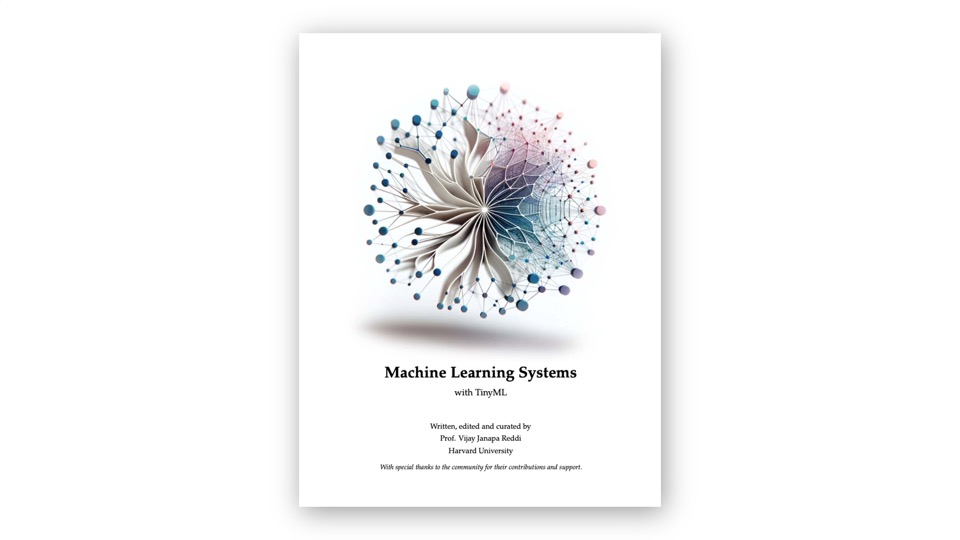About this Book
TinyML Made Easy, an open-access eBook, is an accessible resource for enthusiasts, professionals, and engineering students embarking on the transformative path of embedded machine learning (TinyML). This book offers a systematic introduction to integrating ML algorithms with microcontrollers, focusing on practicality and hands-on experiences.
Students are introduced to core concepts of TinyML through the setup and programming of the Arduino Nicla Vision, a state-of-the-art microcontroller designed for ML applications. The book breaks down complex ideas into understandable segments, ensuring foundational knowledge is built from the ground up.
True to the engineering ethos of ‘learning by doing,’ each chapter focuses on a project that challenges students to apply their knowledge in real-world scenarios. The projects are designed to reinforce learning and stimulate innovation, covering:
- Microcontroller setup and sensor tests,
- Image classification,
- Dataset labeling and Object detection,
- Audio processing and keyword spotting,
- Time-series data and Digital Signal Processing,
- Motion classification and Anomaly detection.
TinyML Made Easy provides detailed walkthroughs of industry-standard tools such as Arduino IDE, OpenMV IDE, and Edge Impulse Studio. Students will gain hands-on experience with data collection, pre-processing, model training, and deployment, equipping them with the technical skills sought in the embedded systems industry.
As TinyML is poised to be a driving force in the evolution of IoT and smart devices, students will emerge from this book with an introductory theoretical understanding and the practical skills necessary to contribute to and shape the future of technology.
With its straightforward language, clarity, and focus on experiential learning, TinyML Made Easy is more than just a book—it’s a comprehensive toolkit for anyone ready to delve into the world of embedded machine learning. It empowers them to move beyond the classroom and into the lab or field, and they are well-prepared to tackle the challenges and opportunities TinyML presents.
The content of this book is also part of the open book Machine Learning Systems, which we invite you to read.

Supplementary Online Resources
Setup Nicla Vision
Image Classification
Object Detection
Audio Feature Engineering
Keyword Spotting (KWS)
DSP Spectral Features
Motion Classification and Anomaly Detection)